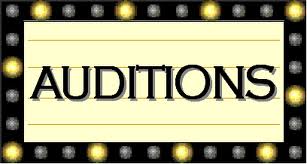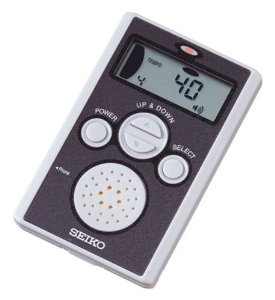Since the release I’ve gotten a ton of questions and I thought I’d answer a bunch of them here as a way to explain the project and get more of the detailed information out there.
This is probably the most common question or comment…
Why on earth did you think this was a good idea?
Well I’ve been told by many people this is crazy and it probably is. The motivation is actually very simple. As a student I constantly listened to recordings of the greatest orchestras in the world to study the best percussionists in the world. However, I was often frustrated because I could not hear the subtle intricacies of the excerpts I knew those great players were playing. I was very jealous of my instrumental colleagues who had “excerpt CD’s”. These were solo recordings of the standard repertoire made by either their teachers or other icons of their field. But there were no similar resources for percussionists, and that’s what motivated me to tackle this project for today’s students.
Why video?
Audio isn’t enough anymore. We play a very physical instrument. How we create sounds is done in a very physical way and video aids in the learning process. Video has also become increasingly easier to capture (John Parks is laughing right now) and it simply had to be a part of the process.
Why online?
When was the last time you actually bought a DVD? That’s why online.
What is the format?
I decided to make 2 videos per excerpt. The first would be a simple recording. No frills, just a recording. This would be for easy access when practicing in the practice room and you want a quick reference. No need to skip around to find the exact passage you are looking for. The second is a longer tutorial video where I discuss the important aspects of each passage as well as discuss my interpretation of them. While this can also be used in the practice room, it is a bit more long form and is meant for true study, not a quick reference.
Can I download the videos? Will they only be available to be streamed?
The videos will only be accessible through streaming. This is for many reasons. It’s harder to control where content goes after it has been downloaded. This scares publishers who gave me permission to use their property. Plus, unless you are on an airplane, wireless internet is everywhere so streaming should be available whenever you need it. Wait… turns out there is even internet on airplanes.
Why are you releasing these videos in volumes?
As you will see, the recording and production of these videos takes a LONG time. I don’t want to release anything until it is 100% ready. The plan is to release different volumes (by instrument family) until all of the repertoire is up. Plus I have a full time job and a home life I very much enjoy. This is (albeit a very large) side project.
Where are you recording?
I recorded all of the performances on stage at Powell Hall (where the Saint Louis Symphony performs). I could have recorded these excerpts in my home studio or in a recording studio but that’s not where the application of all of this happens. Professional auditions happen on stage. Believe me it would have been much easier to record in a different space, but that’s not the point. I wanted students to be able to hear what these excerpts sound like in the same environment they will be playing them in. Not a dead practice room.
How did you come up with the rep for these videos?
I went through audition lists from the past 2 decades and compiled all of them. Now that list was insanely large and impossible to manage. So I culled it down to excerpts that appeared at least twice. That made it slightly more manageable. I then contacted publishers to get permission to distribute their content. A lot of this repertoire is protected under copyright law. Obvious works that are asked on every audition but do not appear here… I will let you do the math on why they are not here.
Was the goal to create a definitive recording of these works?
In a word, no. I felt like that would be awfully presumptuous of me and a virtually impossible goal. I tried to play the version I felt at the time was the way I would play it at an audition. I’m sure if I repeated this project again in 10 years (which really would be crazy) my interpretation of many of these works would have changed. And that’s the point: there is no definitive recording of any of these works, no matter how good they are or who they are recorded by. And these recordings shouldn’t be treated that way. If your interpretation is a little faster, or a little slower, or a little darker, or a little brighter; and you think that sounds better, then go for it! This is how we all develop our own unique sound and personality. My hope is that these recordings are a great resource for you to find your own version.
Are you going to charge for it?
The short answer is yes. These videos are HIGH quality and so is the production. They are also efficiently organized and easy to navigate. You won’t have to search all over YouTube for them. I didn’t want to set up a cheap microphone and 1 camera in my basement and do this on the cheap. The highest quality possible was the goal from day 1. I believe students are starved for HIGH quality recordings of these excerpts. Look on YouTube and you will see videos of high level (and some lower level) players playing a lot of these excerpts. Those videos are great but the recording quality and video quality doesn’t touch these videos. All of this production costs money.
Is this going to be a subscription or for purchase?
Purchase! One stop shop! Once you purchase access to the volume released, its yours! I hesitate to say forever, given the fact we were all using flip phones 15 years ago, but so long as there is an internet, they will be up!
OK get to it, how much?
The series is $300. When you click “buy all” on a video, you will be instructed to set up a small profile. Once you pay (using Paypal or other means of payment) you will create a password with your email and you are good to go! All the videos fall under one package, so once you sign in they are all available.
Who else was involved in this project?
Lots of people!!!! That was another must in this process. I wanted to surround myself with the best people. John Parks IV has been unbelievably instrumental in making this happen. He has had a hand in virtually everything in the process. He is the reason these videos look the way they do. He also has a killer set of ears and was vital in the editing process. I really can’t give him enough credit. Paul Hennerich is the Saint Louis Symphony’s audio engineer and knows Powell Hall and how to record in it better than anyone. He did all the audio recording and is the reason you can hear everything. In addition to John and Paul; Alan Stewart has been instrumental in producing and listening to me hack my way through all these excerpts. Ron Bolte has been very generous and helped me learn a ton about video and how to get the great shots we did. And there are even more cooler shots to come! There are many, many other people who helped out at different points in the process and I am very grateful for their contributions as well. A full list of credits will be listed on each volume’s page.
I hope this answers a lot of your questions about what The Repertoire is all about. I really appreciate all the kind words from you since the announcement. It means a lot! I am really looking forward to seeing and hearing what you think. A lot of work was poured into this project and it has been really exciting to see it come to fruition. I know I would have loved to have access to something like this when I was a student and my hope is that today’s students find it valuable in their own education.
WJ























